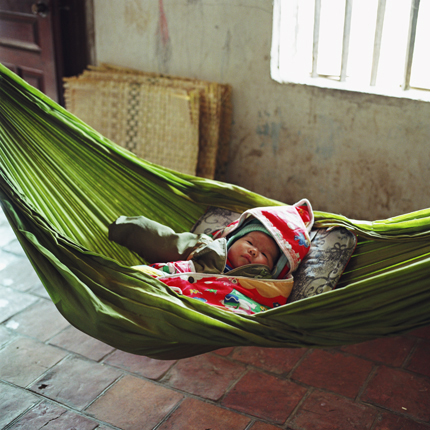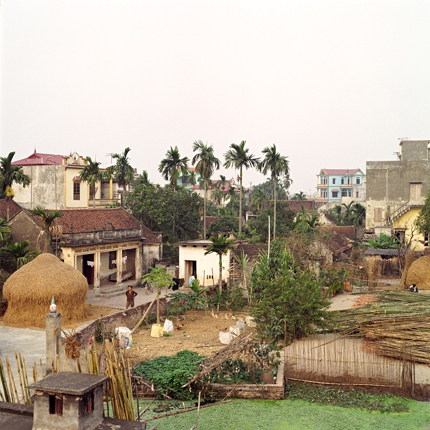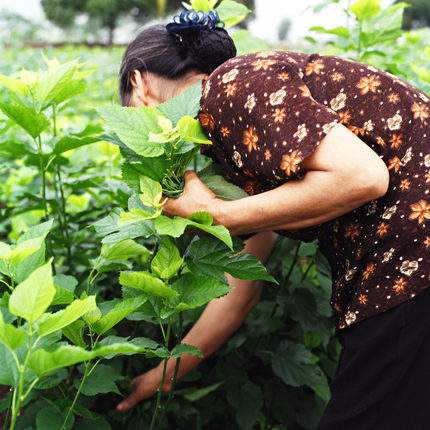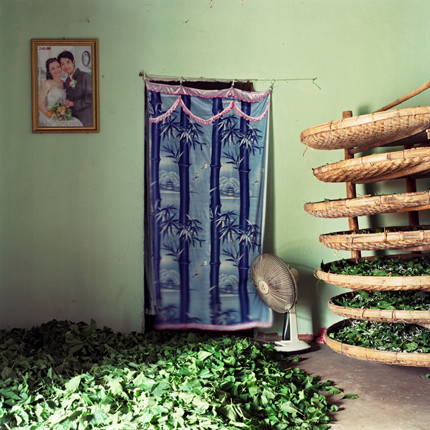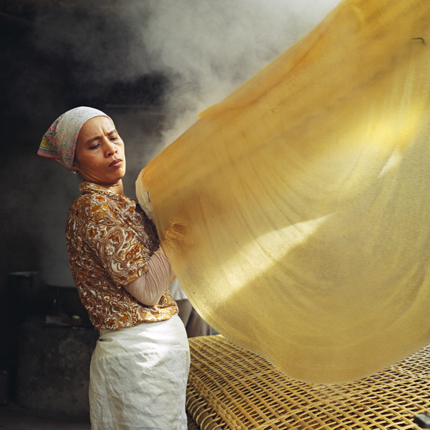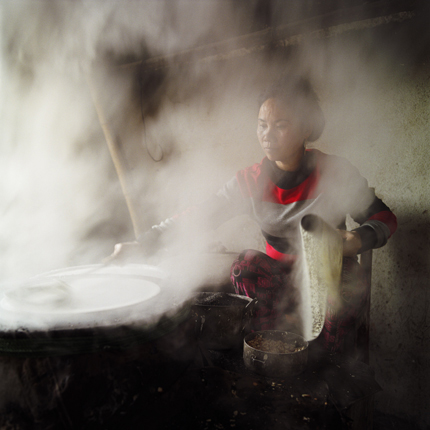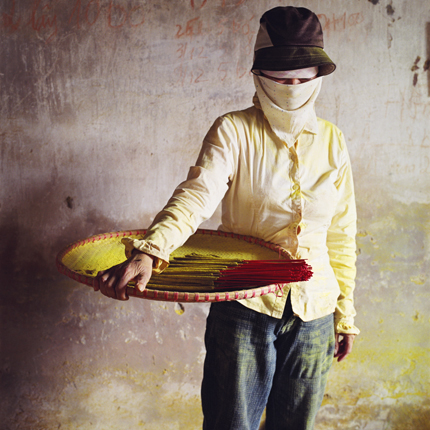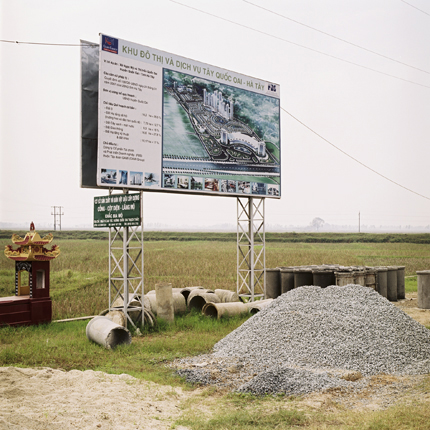Domestic labour in the suburbs and villages in and around Hanoi, Vietnam
As a photographer, I have a particular interest in different landscapes and the way they are shaped by human activity. Working closely with communities and individuals, my work explores people’s relationship to the environment. My approach is based on intuition – the actual form of each project develops as I begin work in each particular region or country.
Between September 2006 and May 2008 I spent two six month periods in Vietnam, exploring the suburbs and villages in and around the capital city of Hanoi. Currently, around 75% of Vietnamese people currently live in the countryside but as Vietnam moves increasingly towards urbanisation, its agricultural labour force faces the prospect of losing its land to urban projects – and its way of life. With Vietnam’s growing population also making less land available for farmers to work, families unable to sustain themselves are turning to the creation of various products in rural areas. These ‘craft’ villages have become the meeting place between rural and urban, agriculture and industry.
Specialising in producing a single product, some craft villages date back historically hundreds of years originally relying on locally available resources, others have recently started as a way for farmers to earn a much needed extra income. Often, it wasn’t difficult to work out the speciality of each village, the whirring of silk weaving machines in Van Phúc coming from every house as I wandered around the back streets, sheets of noodles drying in the rice fields in Tân Hòa or whole communities sitting in their doorways making various forms of the ubiquitous palm hat. Often for very little money.
The flat landscape in the Red River Delta area isn’t particularly beautiful; the villages are functional rather than attractive. The traditional village house is typically single storey and consists of three rooms. The large central room is a multi purpose living and sleeping area as well as a place to work, and it is in this room where many of my images are taken, the mix of work and everyday objects fascinates me visually. Interspersed with images from daily life on the rice field and in the villages, these photographs depict ‘working from home’ in an unromanticised sense, where their subjects, mostly women, balance childcare with the routine work necessary for survival. Often they work in isolation making separate elements of a product which are then passed on to another family for completion.
During the last decade, along with rapid national economic development many craft villages have increased production up to five fold through small-scale industrial development. However, the consequence of this shift is increased waste and environmental pollution with the resources of the landscape becoming overused.
Since 1st August 2008, the Vietnamese authorities, in search of breathing space in order to manage the growth of the capital, have officially incorporated Hà Tây Province into Hà Noi Province within this new urban area, thus creating a fresh peri-urban zone around the extended city limits. This development plan will irremediably alter the lives of many villages such as Chuong (conical hat making village). Those closest to the centre will disappear altogether as distinct and rural entities; those furthest away will run into the suburbs of the new, enlarged city and inevitably traditional crafts will disappear in favour of various business activities related to the inexorable force of attraction exerted by the Delta’s metropolis, drawing the periphery in towards the centre.
Sylvie Fanchette, IRD, the French Research Institute for Development, Hanoi
My work draws attention to observing details which we usually let slip by unnoticed and aims to contribute to the ongoing debate about the changing nature of rural life.



